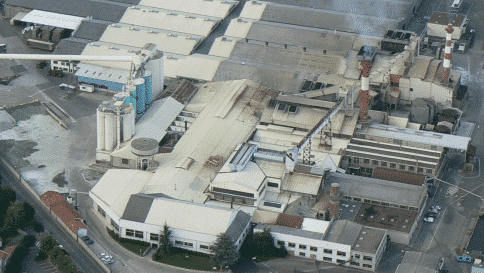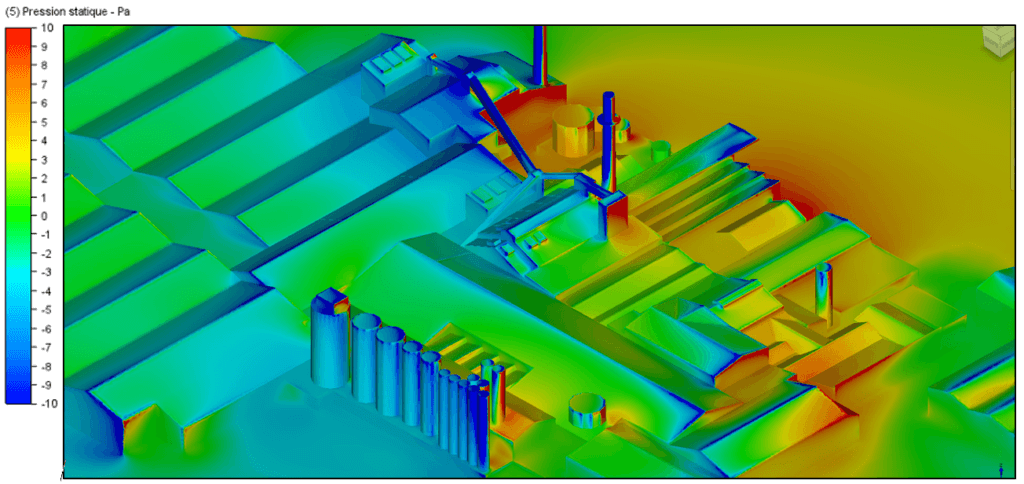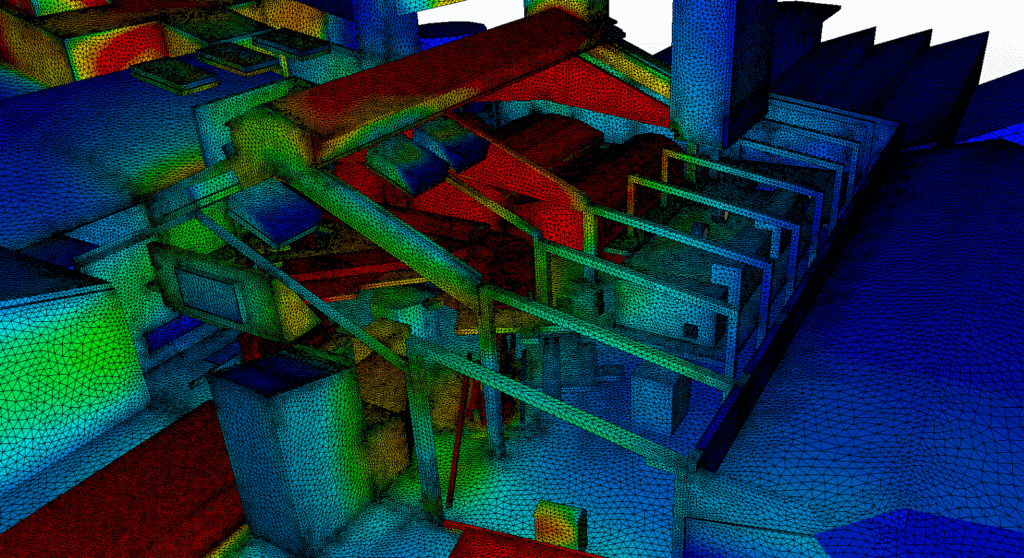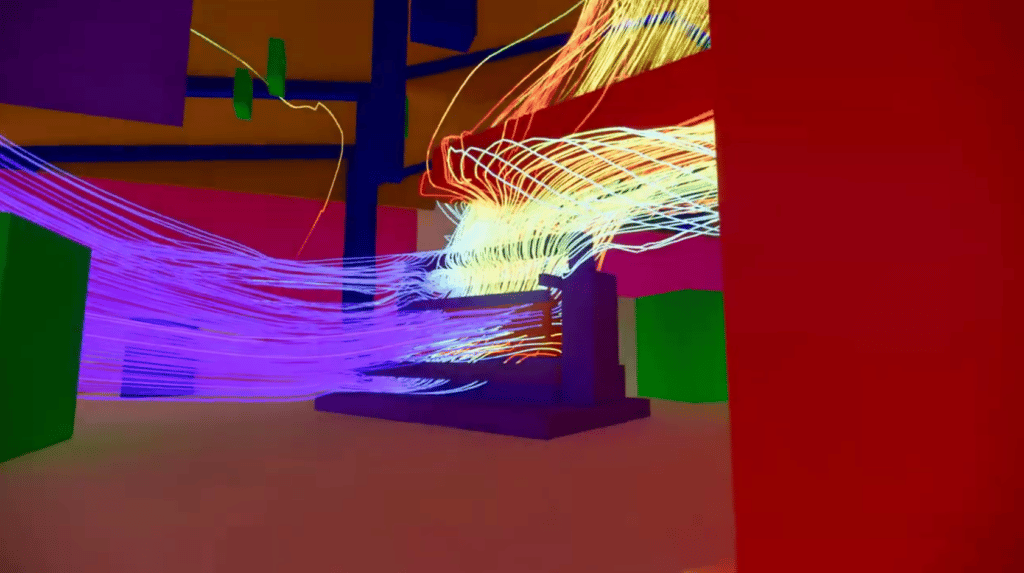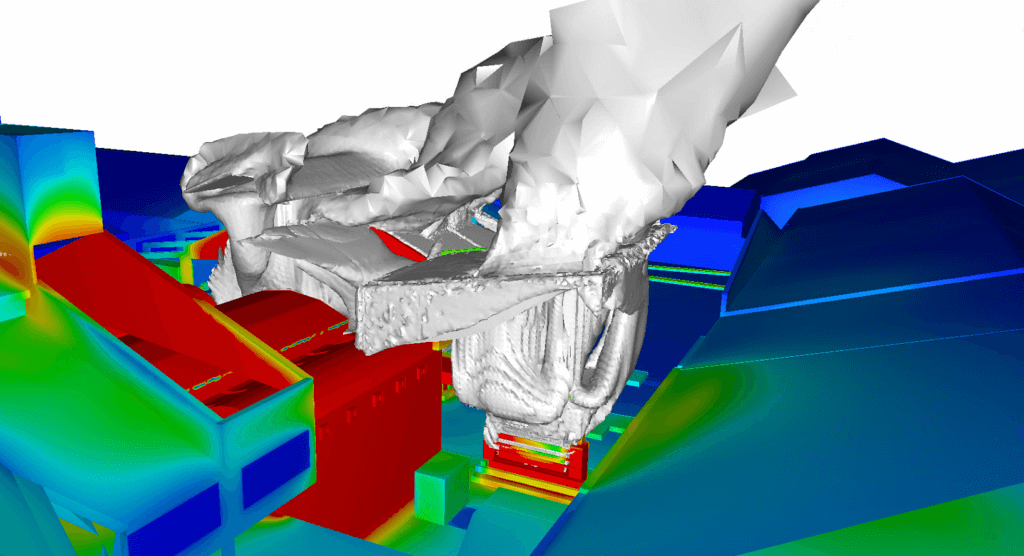In a few words
EOLIOS Engineering has provided an overview of the thermo-aerodynamic conditions of the different phenomena that take place in the Veauche glass factory in relation to the processes of the furnaces and IS machines.
Glass factory of the Loire
Year
2020
Customer
O-I
Location
France
Typology
Glassware
Continue browsing :
Our other projects :
Latest news:
Main objectives of the mission
The main challenge for glass plants is the optimization of thermo-aerodynamic flows. The glass coming out of the furnaces must be properly cooled while maintaining a suitable working environment for the operators. For this mission, the EOLIOS team has provided its expertise in glass engineering to validate and help the design office to control the thermo-aerodynamic phenomena induced by the various stages of manufacture at very high temperature.
Creation of the digital twin
For this study the entire site of Veauche was reproduced with 3D software. The 3D reproduction of the site results in a digital twin. For the CFD study to be correct, it faithfully reproduces all the air volumes, the architecture of the building as well as the furnaces and IS machines.
In addition, the results take into account many physical phenomena such as radiant wall temperatures, thermal draft from manufacturing processes, wind pressure, location and characteristics of air flow resistances, and the presence of mechanical air movement systems.
The creation of a very detailed digital twin allows us to perform highly accurate calculations and thus quickly identify potential thermal problems. By analyzing these results from a global or local perspective, we can anticipate potential problems and develop innovative solutions that adapt to the different complications identified.
Description of the IS machines
IS machines are machines for glass forming. Initially, the machine is supplied with glass from the forebay through a distribution channel called a feeder. The role of the feeder is to bring the glass to the dispenser at the temperature required by the forming machine while ensuring temperature homogeneity throughout the glass section.
Considering the very high temperatures involved in these machines, they form an essential point of the study as well as the furnaces. EOLIOS proposes to study the thermo-aerodynamic flows around these machines in view of the natural ventilation provided by air shafts and the heat release of the glass. These machines are in contact with the operators, it is necessary to be vigilant as for the respect of the working conditions of those
Main results obtained
During the CFD simulations, the EOLIOS team focused on the natural ventilation of the glass plant as well as on the temperatures inside the plant. Initially, EOLIOS was able to detect that the roof building was overheating with temperatures of around 50°C. It is therefore necessary that this one has vents in the upper part to limit that the hot air stagnates there.
This analysis also identified the primary driver of air movement in the building volume. Indeed, the creation of heat by the process at the level of the furnace and the IS machines heats the air masses which are then put in movement by thermal draught(chimney effect) and by the ventilation of the processes.
Then the study dealt with the case of the thermo-aerodynamic flows of IS machines. In the current configuration of the building, with no natural openings, this does not seem optimal. A pollutant diffusion study was also carried out to verify that the extraction of grease fumes from the IS machines is carried out correctly. This one was judged to be in conformity with the safety standards.
Study of pollution extraction from IS machines - 3D viewer
The advantages of CFD simulation for glass factories
Digital simulation offers new perspectives for design offices. This makes it possible to foresee a large number of scenarios and consequently to control all the unforeseen events linked to a bad design. In the case of glass factories, multiphysics modeling allows to take into account the totality of the phenomena at the origin of the thermo-aerodynamic flows.
Thanks to its calculation servers, EOLIOS models can be simulated in their entirety with great accuracy in a short time. Moreover, the experience of EOLIOS in general aeraulics allows our team to propose innovative and relevant solutions in the case of overheating problems. Nevertheless, implementing CFD simulations in your design process means calling on experts in fluid mechanics, thermal and numerical simulations to ensure that no problems occur in the future.
Video summary of the study
Our CFD engineering studies have simulated the heat and air transfer that occurs in the glass plant environment. This includes the evaluation of temperatures andair velocities in the different areas of the glass plant as well as pressures, pollution levels and CO2 levels. CFD simulations were also used to evaluate the air quality inside the glass plant and to estimate the levels of indoor and outdoor pollutants. This can help determine if the ventilation system is effective enough to maintain acceptable pollutant levels.
Finally, EOLIOS could realize the design of the natural ventilation openings within the framework of the extension and the rehabilitation of the factory.

